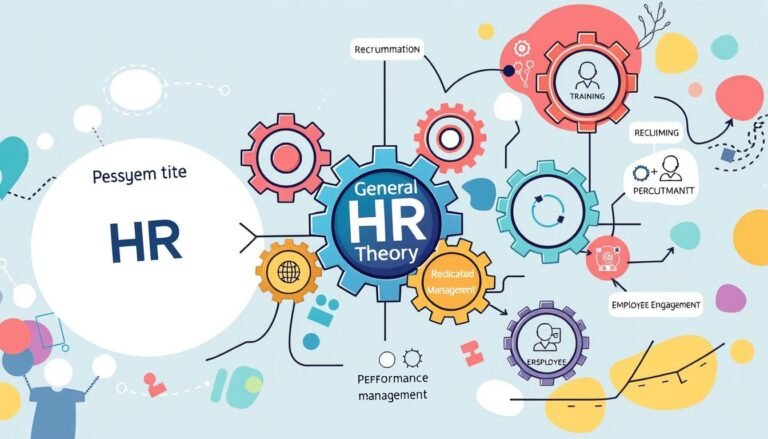Employer Branding in a Competitive Talent Market
In today’s fast-paced job market, companies face a tough challenge: attracting and keeping top talent. With remote work on the rise and job seekers placing more value on company culture, employer branding has become a game-changer for businesses looking to stand out.
Employer branding is more than just a buzzword. It’s a powerful talent acquisition strategy that shapes how potential employees view your company. A strong employer brand can make all the difference in attracting the best candidates and keeping your current team engaged.
Consider this: LinkedIn found that 75% of job seekers look at an employer’s brand before applying. That’s a huge number! It shows just how crucial your company’s image is in the hiring process. But it’s not just about attracting new talent. A solid employer brand can cut employee turnover by 28%, saving you time and money in the long run.
At its core, employer branding is about crafting a compelling employee value proposition. This means clearly communicating what makes your company a great place to work. It’s about showcasing your culture, values, and the unique experiences you offer to employees.
Remember, in this competitive talent market, your employer brand can be your secret weapon. It’s what sets you apart and makes top talent choose you over other options. So, it’s time to start thinking about how you can boost your employer brand and become the employer of choice in your industry.
Key Takeaways
- 75% of job seekers consider employer brand before applying
- Strong employer branding reduces turnover by 28%
- Employer branding shapes company image for potential employees
- A compelling employee value proposition is crucial
- Effective employer branding can lower recruitment costs
- Company culture and values play a key role in attracting talent
The Importance of Employer Branding Today
In today’s job market, employer branding is key. It’s not just about finding talent. It’s about building a brand that attracts and keeps employees.
Defining Employer Branding
Employer branding shapes how people see your company as a workplace. It’s about creating a unique image that stands out to job seekers. This includes showing off your company culture, values, and what it’s like to work there.
Benefits of Strong Employer Branding
A strong employer brand brings big benefits. Companies with a strong brand spend 50% less on hiring. They also see a 31% drop in employee turnover, showing how it helps keep talent.
Moreover, 92% of job seekers look at employer branding when searching for jobs.
The Impact on Employee Retention
Good employer branding helps keep employees. Companies that focus on their brand see a 46% jump in employee engagement. This leads to happier, more productive workers.
In fact, 85% of job seekers would take a pay cut to work for a company with a great brand.
“Our employer brand is our most valuable asset in attracting and retaining top talent. It’s the cornerstone of our success in this competitive market.”
By focusing on a positive candidate experience and a strong employer brand, companies can keep their best talent. This approach not only attracts great candidates but also builds a loyal and productive team.
Understanding the Competitive Talent Market
The job market is getting tougher, with more jobs than people to fill them. This has led to new ways of finding and hiring workers.
Current Trends in Hiring
Now, the job market is all about what the candidates want. Employers need to find new ways to attract them. Some key trends include:
- Remote work options
- Emphasis on work-life balance
- Focus on diversity and inclusion
- Authentic employer branding
The Role of Demographics
Demographics are very important in the job market. Millennials and Gen-Z want jobs that let them grow and have a good life outside work. Employers must offer what these groups want.
Technology’s Influence on Recruitment
Technology has changed how we find and hire workers. It lets people look up companies easily and helps companies find talent worldwide. Sites like LinkedIn are key for showing who you are as a company and connecting with candidates.
| Recruitment Strategy | Impact on Talent Acquisition |
|---|---|
| Employee Referral Programs | Expand access to high-quality candidates |
| Social Media Presence | Showcases company culture and engages candidates |
| Streamlined Hiring Process | Prevents loss of top talent to competitors |
“In 2024, employer branding will play a significant role as a multifaceted, organization-wide endeavor influencing every aspect of an employer’s identity and reputation.”
To succeed, companies need to build real employer brands. They should use technology and meet the changing needs of workers.
Key Elements of Effective Employer Branding
Effective employer branding is key to attracting and keeping the best talent. Companies like Starbucks and Airbnb are leaders in this area. They have built strong employer brands that attract job seekers, creating positive work cultures and lowering turnover.
Company Culture and Values
At the core of employer branding is Corporate Culture Branding. Salesforce’s Ohana culture is a great example. It has led to higher employee engagement and a 50% drop in turnover. A strong culture draws in top talent and keeps them, boosting productivity and job happiness.
Employee Value Proposition (EVP)
A clear EVP is vital for keeping talent. Hilton Worldwide shows its dedication to employee growth and well-being through its branding. This has cut down recruitment costs and sped up filling positions.
Branding Through Social Media
Social Media Recruiting is a strong tool for showing off employer brands. Using LinkedIn, Twitter, and Instagram can help attract the best talent. Content marketing, like blogs and videos, is key in building a trustworthy employer brand.
“More than 75% of job seekers research a company’s reputation and employer brand before applying, indicating the significance of a strong employer brand in the current job market.”
By focusing on these elements, companies can build a strong employer brand. This attracts top talent, lowers turnover, and creates a positive work environment. Keeping branding strategies up-to-date is important in a changing job market, appealing to different workforce needs.
Measuring Your Employer Brand
It’s key to track Employer Branding Metrics to see how appealing your company is to job seekers. A strong employer brand can really help in hiring and keeping employees happy.
Key Metrics to Track
There are important metrics to check on your employer brand’s success. The Candidate Net Promoter Score (NPS) is a big deal, with scores between 30 and 70 being top-notch. Also, employee referrals are crucial because people trust what current employees say about the job more than the company itself.
| Metric | Impact |
|---|---|
| Strong Employer Brand | 50% reduction in cost per hire, 50% decrease in hiring time |
| Social Media Engagement | 52% of candidates check company social media before applying |
| Employee Referrals | Increased job offer acceptance rates |
Tools for Brand Analysis
There are many tools to help measure your employer brand’s strength. Social media monitoring shows likes, shares, and followers. Website analytics give insights into how visitors act, like bounce rates and where they drop off. The Employer Brand Index (EBI) looks at how well your brand does online.
Gathering Employee Feedback
It’s vital to understand what employees think of your employer brand. Regular surveys can show how engaged they are and what needs work. Tracking things like employee referrals and how long new hires stay can also give you useful info.
“A strong employer brand can reduce hiring time by 200%.”
By always checking these metrics and listening to employee feedback, companies can make their employer branding better. This makes your workplace more appealing to both current and future employees.
Strategies to Enhance Employer Branding
In today’s job market, having a strong employer brand is key. Companies with great employer branding get 50% more qualified applicants. Let’s look at ways to improve your employer brand and draw in the best talent.
Leveraging Employee Testimonials
Using employee advocacy can really boost your employer brand. Real stories from your team give insight into your work culture. Since 75% of job seekers check an employer’s brand before applying, testimonials are crucial.
Collaborating with Industry Influencers
Working with industry influencers can greatly increase your visibility and trustworthiness. You can collaborate in many ways, like creating content together or speaking at events. It’s a great way to show off your company’s skills and values to more people.
Creating Engaging Content
Content marketing is vital in today’s digital world. Make interesting content that shows off your company culture, what it’s like to work there, and chances for career growth. With 84% of companies using social media for branding, creating content that people want to share is important.
- Showcase behind-the-scenes looks at your workplace
- Feature employee spotlights and success stories
- Share insights about your industry and company values
Remember, a clear employer brand can cut employee turnover by 28%. By using these strategies, you’ll not only attract great talent but also create a positive work place. This encourages employees to stay and grow with your company.
Building a Strong Online Presence
In today’s digital world, having a strong online presence is key for Digital Employer Branding. Companies need to use Online Recruitment Strategies to draw in the best talent. This helps them stand out in a crowded job market.
Optimizing Your Careers Page
Your careers page is often the first thing job seekers see about your company. Make it memorable by showing off your culture, values, and what you offer employees. Use content like employee stories and videos to give a true look at your workplace.
Utilizing LinkedIn Effectively
LinkedIn is a top tool for professional networking and finding talent. Keep your company page fresh with new content, job openings, and employee wins. Also, get your team to share updates and join in on industry talks to reach more people.
Engaging with Job Seekers on Social Media
Social media is a great way to connect with job seekers. Share what goes on behind the scenes, celebrate employee wins, and answer questions quickly. This makes your brand more relatable and welcoming to job seekers.
“76% of employees believe that opportunities for career growth are key to their satisfaction at work.”
Creating a strong online presence is more than just sharing your message. It’s about making real connections that show off your company’s culture and values. By using these Digital Employer Branding strategies, you’ll attract better candidates and become a top choice for employers.
Navigating Challenges in Employer Branding
Employer Brand Management faces many hurdles today. Companies must overcome these challenges to keep a strong brand and attract the best talent.
Addressing Negative Reviews
Negative reviews can harm a company’s image. Crisis Communication in HR is key in handling these issues. Quick and professional responses show a commitment to getting better and being open.
Overcoming Budget Constraints
Not having enough money can stop branding efforts. Creative ideas like employee advocacy can help without spending a lot. Using social media and content marketing are smart ways to improve branding without a big budget.
Managing Brand Consistency
Keeping a consistent brand message is crucial. This means aligning recruitment materials, social media, and internal communications. A clear brand voice helps attract the right candidates.
| Challenge | Solution | Impact |
|---|---|---|
| Negative Reviews | Transparent Crisis Communication | 23% increase in brand trust |
| Budget Constraints | Employee Advocacy Programs | 40% boost in brand visibility |
| Brand Inconsistency | Unified Messaging Strategy | 35% improvement in candidate quality |
By tackling these challenges early, companies can improve their Employer Brand Management. This helps them stand out as top employers in the competitive job market.
The Role of Diversity and Inclusion
Diversity in employer branding is key to attracting top talent. Companies that welcome everyone have an edge in the job market. Let’s look at why diversity and inclusion are important and how to make them work.
Why D&I Matters for Employer Branding
A diverse team is now a must, not just a plus. 76% of job seekers look at diversity when choosing a company. Ignoring D&I can cost a lot in hiring and rebranding. It also pushes away candidates from underrepresented groups.
Implementing Inclusive Practices
Creating an inclusive culture is more than words. Companies must make D&I part of their values and daily life. This means flexible work hours, accessible spaces, and keeping D&I standards up to date. Being true to your word is crucial to keep your reputation strong.
Highlighting D&I Initiatives
It’s important to share D&I efforts to attract and keep talent. Companies should show their commitment on websites and social media. Being mindful and accurate in diversity branding is key to avoid looking fake. Building a strong D&I reputation takes time and effort.
“Diversity is being invited to the party; inclusion is being asked to dance.” – Verna Myers
By focusing on diversity and inclusion, companies can make a welcoming space for everyone. This makes them stand out in the competitive talent market.
Future Trends in Employer Branding
The job market is changing fast, and so are employer branding strategies. Companies are finding new ways to attract and keep top talent.
The Rise of Remote Work Branding
Remote work is now common, and companies are adjusting their branding. They use virtual tours and online events to show off their culture. For example, L’Oréal has started using AI chatbots to speed up hiring, saving their UK team 45 days in six months.
The Shift Towards Authenticity
More companies are focusing on being real in their branding. People want to hear real stories, not just marketing. Airbnb’s “Belong Anywhere” campaign is a great example, sharing personal stories of hosts and employees.
By 2025, companies that value sustainability will attract more employees who care about the planet.
Adapting to Generational Changes
It’s important to understand what different generations want. A 2023 Deloitte study showed that Gen Z and Millennials choose jobs based on the planet and people. Companies like Salesforce offer great benefits, like meditation rooms and mental health support.
This shows that by 2025, employers will need to focus on well-being as part of their brand.
Source Links
- Employer Branding: Attracting the Right Talent in a Competitive Market – Tipping Point Communications
- Employer branding: how to attract talent in a competitive market
- Employer Branding: How to Attract Top Talent in a Competitive Market
- The Importance of Employer Branding in Recruitment
- Employer Branding in Today’s Competitive Hiring Landscape
- Employer Branding in 2024: Building a Competitive Advantage
- The Importance of Employer Branding: How to Attract and Retain Top Talent – Authentic
- Top 10 Strategies to Attract Top Talent in a Competitive Market
- What are the key elements of a successful employer branding campaign?
- Building a Strong Employer Brand: A Key to Successful Hiring
- Effective Employer Branding: Attracting Top Talent in a Competitive Market
- 12 Employer Branding Metrics for HR to Track
- How To Measure the Effectiveness of Your Employer Brand – Fraser Dove
- Council Post: Employer Branding Strategy: How To Recruit And Retain Top Talent
- Turn Your Employer Branding into a Competitive Advantage in 8 Steps
- Attract Top Talent with These Employer Branding Initiatives
- Building a Strong Employer Brand in a Competitive Market – Work in Progress
- Building a Strong Employer Brand: Attracting Top Talent | Bluetext
- Building a Strong Employer Brand: Key Strategies for Recruitment Success – Direct Recruiters Inc.
- Employer Branding: Challenges and Solutions for Recruiters
- Employer Branding: Upskilling as a Strategy in the War for Talent – By Ana McFee
- The role of diversity in building a strong employer brand | InStride
- Diversity and inclusion in employer branding: an explorative analysis of European companies’ digital communication
- Employer Branding Trends for 2025: Going Beyond the Buzzwords
- The Future of Employer Branding: Emerging Trends and Technologies








